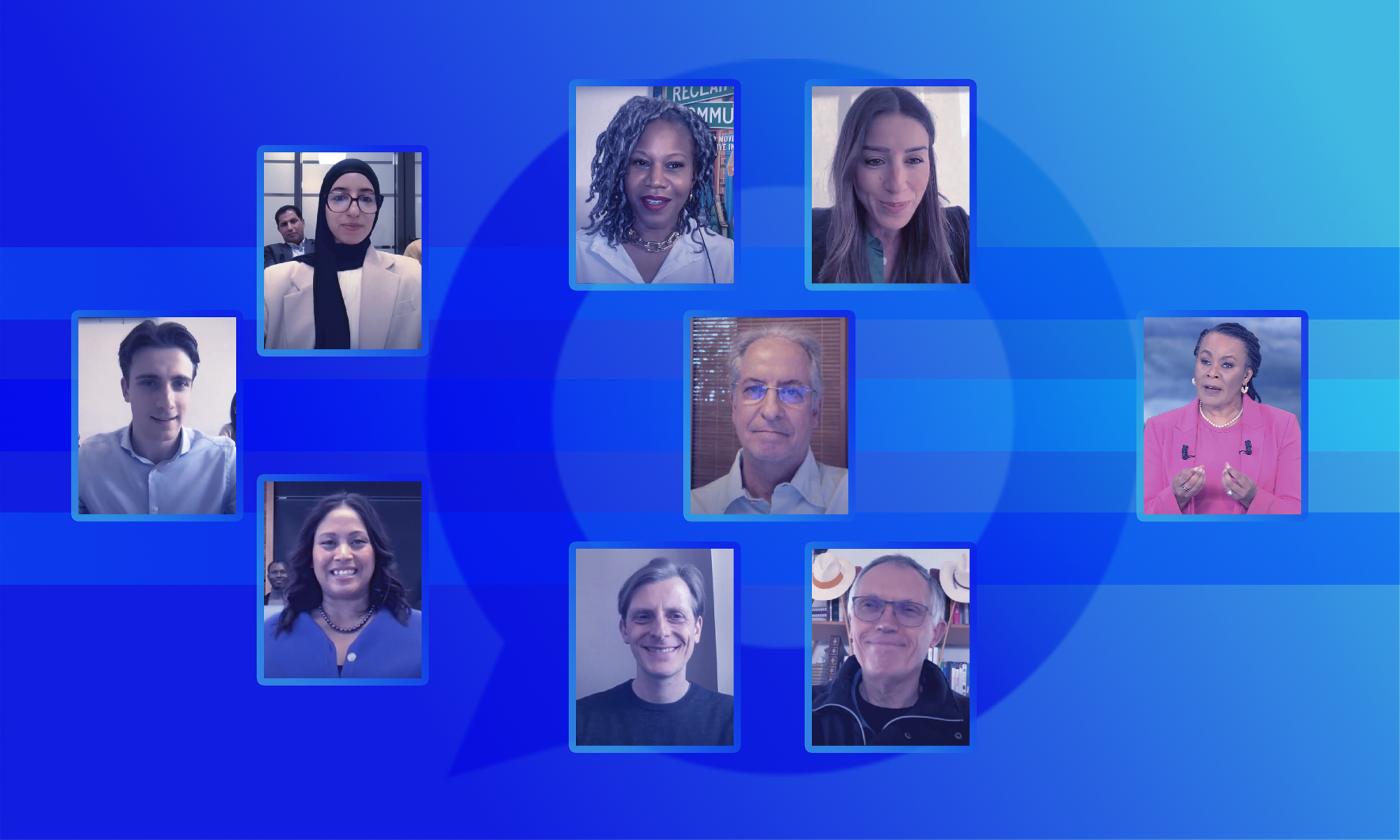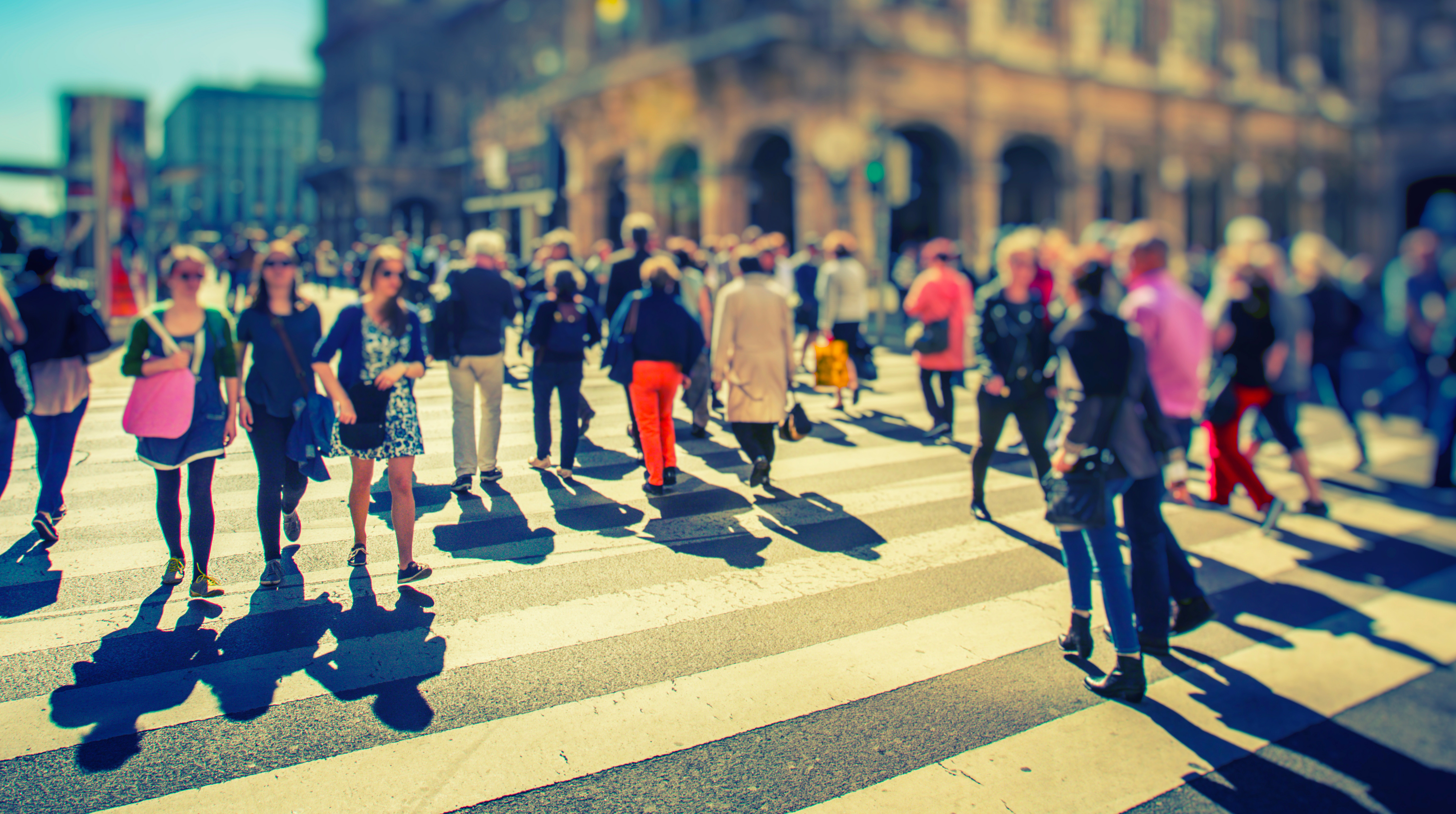

Key Takeaways from the 2024 Freedom of Mobility Forum Debate
On April 3rd, 2024, the Freedom of Mobility Forum’s second live debate addressed the question “How will our planet accommodate the mobility needs of 8 billion people?”
University students from three continents called for action to protect freedom of movement in a world shaped by dangerous and increasing inequities as we address climate change and resource scarcity. These three young voices challenged five international panelists – Majora Carter, Manal Jalloul, Matthias Schmelzer, Roberto Schaeffer, and Carlos Tavares – who shared their perspectives and experience on how to embrace these challenges.
Following is the Forum’s synopsis of some of the principal takeaways that emerged from the debate presented in three thematic areas:


Will Resource Scarcity Limit or Stimulate Innovation?
The UN forecasts that the global population will reach 9.7 billion by 2050.(1) We face the challenge of meeting escalating needs associated with our current mobility models. For example, global demand for lithium-ion batteries is expected to grow 25% per annum by 2030.(2)
In parallel, we know there are nine planetary boundaries that define the limits within which humanity can continue to develop and thrive while ensuring the stability and resilience of the earth’s systems. Six of these nine have already been exceeded, resulting in increased risk for both people and ecosystems.(3)
The switch to electric only mobility devices is seen as a “Global North” perspective, i.e. as a solution favoring the Global North in terms of more than just affordability. In other countries, this one-size-fits-all solution is not realistic. 800 million people in the world don’t have access to electricity and for many others the electricity supply is not stable. The climate emergency makes it imperative that we move faster.
By contrast, the rebound effect is a threat to sustainable mobility as efforts to transition to more efficient mobility solutions are being offset by the increases in vehicles and distances traveled.
We have a range of existing solutions, but each comes with its limitations:
- Green hydrogen: the technology is now available, but it is both costly and water intensive. The best immediate application seems to be for large fleets...and only for the short term.
- Alternative fuels: biofuels provide the most immediate ready-to-use solution for global South countries (such as in Brazil, for instance), but the focus should remain on avoiding competition with agriculture, as biofuel production requires a large amount of land and water.
- Reducing the number of mobility devices: greater availability of shared mobility services in cities (which requires more public parking, reasonable insurance costs, increased availability of green energy and charging units, adequate security). This shift requires an urgent move away from traditional car ownership models towards shared mobility solutions, leading to reduced environmental impacts and enhanced accessibility.
“Our research suggests that a shift in demand from owning mobility assets such as cars to buying mobility services is on the way. So, what does the mobility sector need to do to prepare themselves for the shift in their business model?”
- Sacha Krajcik, student at HEC (France)
“While transitioning to more energy sources [other than green hydrogen], we still need to protect our planet.”
- Abir Mesbahi, student at ENSA (Morocco)
- Investing in safe and permanent public transportation systems and services to promote and strengthen intermodal transport, particularly in Global South countries.
“The real issue here is how to invest in public transportation and intermodality. […] We don’t need new business models for private ownership of cars.”
– Roberto Schaeffer (Environment)
- Reducing the consumption of natural resources: reduce the size of mobility devices to fit the real needs (notably small urban electric devices), thereby reducing the amount of lithium inside batteries and be reasonable about the autonomy range, accelerate development and implementation of new battery chemistries, which will halve the use of raw materials, develop the recycling ecosystem and infrastructure.
Artificial Intelligence can be a vital ally in optimizing these solutions through predictive analytics: process efficiency, extraction techniques, smart allocation of resources, dynamic supply for demand, optimized transport through intermodal platforms.
“With the integration of AI technologies, we will be able to improve the accessibility to mobility to everybody, and ultimately reduce the carbon emissions, allow for more sustainable solutions, and guide people towards picking the right options in terms of mobility solutions, rather than simply imposing [these solutions] on them.”
– Manal Jalloul (Tech & AI)
Climate change and the increasing scarcity of resources make urgent change in society imperative. Change will only happen when citizens are aware of the need and accept it. The pre-condition for change is social, not technological.


What If Mobility Was First About Social Justice?
Structural and societal barriers limit lifestyle choices and are exacerbated by climate change. Mobility is about more than just movement from one place to another. It is also an enabler of social mobility, which is currently restricted to the privileged, the fortunate few.
“We can fly across the globe, have an electric car drive us to work, and even travel to outer space. This kinetic freedom is, however, restricted to the privileged mobile elite.”
– Amanda Yu, student at Brandeis (USA)
The UNDP reports that 45% of the global population struggles to access essential healthcare due to transportation limitations. And with over 1 billion people lacking access to all-weather roads, societal inequalities are exacerbated, and social mobility is limited globally.(4)
For freedom of mobility to be a reality, people need to have choices. Currently, many feel that they do not have options available to make the necessary choices. The shift to electric mobility, for example, might have gone the wrong way in terms of affordability.
The quest for sustainable mobility solutions must include efforts to democratize access to ensure that advancements in transportation are not privileges for the few, but rights for all, regardless of their socio-economic status or geographic location. This calls for an inclusive approach to the development and deployment of mobility infrastructures.
“Bringing mobility for the many rather than preserving it for the few [means investing in public transportation rather than electric SUVs].”
– Matthias Schmelzer (Economy)
Displacement and gentrification issues need to be addressed to prevent further inequalities. The discussion around equity in mobility pushes us to consider how new models of transportation can bridge, rather than expand, existing societal divides. Policies and initiatives should focus on creating value within local communities to prevent talent drain and improve local economic mobility, which is the cornerstone to enhancing economic development.
“So, whenever we talk about cars, mobility devices, whatever you want to pick, it is clear that if we want to address the inequality and the poverty drama that was described, you need to create value somewhere in that community so that people do not need to leave the community.”
– Carlos Tavares (Business)
“Mobility’s great benefit can be used to keep people happy and healthy wherever they are, and actually be used to support and develop low status communities into much more economically mobile places that actually allow people to pursue their version of the American dream.”
– Majora Carter (Society)


Without Systemic Change Can We Rely on Individual Efforts?
The exclusive YouGov survey presented during the live debate showed that:
- Lawmakers and citizens are the stakeholders seen as having the biggest influence in driving change for greener transportation options
- 1 in 4 global citizens believe that the young generations can influence the change to greener transportation
A profound re-evaluation of what mobility means to society is imperative.
The global dependency on those natural resources which are reaching the end of the planet’s capabilities applies to all countries, in the North, and in the South. People acknowledge generally that an increase in material intensive lifestyles is untenable. Even though transportation models need to be designed to fit local needs and constraints, local decisions can have global implications. With ‘green colonialism’, the application of green mobility solutions designed for the Global North or high-revenue communities can have negative, even devastating, impacts for the Global South and low status communities.
“If we don’t acknowledge it [green colonialism], then we are going to continue to socialize those costs [of inequality] and keep paying them over and over again.”
– Majora Carter (Society)
Collective reimagining of mobility will shift the focus from maximizing speed and convenience to prioritizing the real needs and resilience.
“I think ultimately the solution to rebound effects kicking in is to impose some form of limits, [also on the number of cars on the streets] […] We can also see limits as a project of collective self-determination, where we as humanity give ourselves limits that enable long-term thriving on this planet.”
– Matthias Schmelzer (Economy)
Challenging and changing our mindsets and perceptions around mobility involves questioning the necessity of each journey, considering alternative modes of transport, and embracing slower, more mindful ways of moving. This shift is not merely about adapting to new technologies but also about transforming the cultural and societal norms that dictate our current mobility choices.
“We have to be a lot more creative about thinking about what are new opportunities that could be out there that are sitting right in plain sight. That literally make it so that we’re the ones pushing the ideas and also policies that they can be much more transformative into a much more sustainable energy and transportation economy for all.”
– Majora Carter (Society)
Debaters called for the alignment of economic stakeholders, consumers and societies to support the collective endeavor to protect the freedom of mobility for all.
“The change of direction needs to come [from the population, the citizens] out of the polls, out of the elections.”
– Carlos Tavares (Business)
The debate put some light on the need for voluntary solutions to make mobility accessible for the many. This implies a collective effort through collaboration between companies, public leaders, and civil society to create a sustainable mobility ecosystem. Education will be a powerful lever. AI technologies can play a key role in optimizing mobility options, personalizing experiences, gathering valuable mobility data to better predict demand and better inform policymakers.
“Mobility is a precursor of business creation in communities. AI can help design the appropriate infrastructure.”
– Manal Jalloul (Tech & AI)
The online research company YouGov, in partnership with the Freedom of Mobility Forum, unveiled the results of an exclusive survey measuring the appetite for change in mobility habits for respondents across five countries (Brazil, France, India, Morocco, United States).
The results show that less than 10% of respondents have started making profound changes in their transportation options, signaling that we’re only just beginning to rev up for bigger changes ahead. They also show that 1 in 4 global citizens see younger generations as key in driving change for greener transportation.
For the university speakers, representing future generations, more of the same is not an option. They urged a fundamental rethink of mobility at both the global and local level.
Here are their calls to action:
“We cannot continue to consume our planet's resources as if they were infinite. I call on us to prioritize innovation driven solutions for resource efficient mobility even if it means disrupting traditional industries and life views.”
– Abir Mesbahi, student at ENSA (Morocco)
“We cannot solve the global mobility challenges in silos nor with our existing business models. I call on companies, public leaders and civil society to collaborate to rethink the value equation and design the right mobility eco-system that is tailored to local constraints and opportunities.”
– Sacha Krajcik, student at HEC (France)
“The mobility decisions today have not taken into account the needs of geographically and economically diverse populations. I call on each and every one of you to think about what we need to do today to equitably advance social mobility for both current and future generations.”
– Amanda Yu, student at Brandeis (USA)